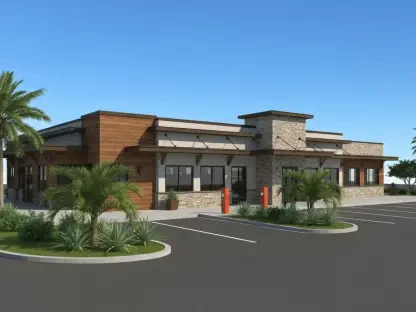Katarina Railko, our esteemed hospitality expert with a strong background in travel, tourism, and events, brings her insights into the vibrant and rapidly evolving beer industry. With her keen eye for market trends and consumer behavior, Katarina discusses the remarkable story behind Outlaw Light Beer and its groundbreaking presence in the domestic beer category.
Could you tell us about the founding story of Outlaw Light Beer and what inspired its creation in 2022?
Outlaw Light Beer was born from a straightforward concept: light beer drinkers deserve something more exciting. The idea was to offer better taste and pricing with a brand people could truly connect with. Founded in Colorado in 2022 under Tivoli Brewing Co., Outlaw sought to shake up the stagnant domestic light beer market. Recognizing an opportunity to create something fresh for modern consumers, Outlaw quickly gained ground thanks to strong distributor networks and retail relationships, maintaining its focus on delivering authentic, quality beer.
How has Tivoli Brewing Co.’s legacy influenced Outlaw Light Beer’s development and branding?
Tivoli Brewing Co. provided a rich historical backdrop for Outlaw’s development. With a brewing legacy reaching back to 1859, Tivoli’s history of resilience was a perfect foundation for Outlaw’s modern rebellion against the traditional light beer space. This legacy has infused Outlaw with a sense of authenticity and craftsmanship while enabling the brand to flourish and stand out in a crowded market.
Can you elaborate on the opportunities you saw in the domestic light beer category that led to the creation of Outlaw?
We identified that the domestic light beer space had become too complacent and out of touch with the current consumer’s desires. Many were drinking purely out of habit rather than enthusiasm. We saw potential in creating a product that not only offered an improved taste and experience but was also attainable price-wise. By challenging the conventional pricing models and offering better product quality, Outlaw unlocked new avenues for consumer engagement and loyalty.
What was your initial vision for Outlaw Light Beer, and how did your experience at Anheuser-Busch shape this vision?
The primary vision was to deliver a light beer that matched craft quality yet remained competitive in pricing with large-scale brands. From my time at Anheuser-Busch, I learned the imperative need for adaptability and the difficulties larger companies face with this concept. We structured Outlaw in such a way that we could bypass this inertia, emphasizing speed, consumer connection, and excellence in our core offerings.
How did you manage to keep Outlaw Light Beer’s team nimble and focused on key priorities during its rapid growth?
We maintained a small and highly focused team, focusing on pivotal goals and staying aligned with our core mission. Our strategy involved staying connected to consumer demands and prioritizing a streamlined approach. This dedication allowed us to swiftly react to market changes and operational needs, ensuring efficiency and relevance as we grew rapidly.
In your view, how have legacy light beer brands lost their way, and what did Outlaw do differently to avoid these pitfalls?
Legacy brands often drift away from their consumers, overly focusing on sustaining existing models instead of innovating. They increased prices without enhancing product quality, assuming customer loyalty. Outlaw took a different path—providing a superior product at an aggressive price point. This approach required rigorous production and sourcing discipline but paid off by aligning with customers who were seeking quality and value.
How did you approach pricing and production to offer a premium product at a disruptive price point?
We approached pricing with a balance between quality and affordability. By maintaining strict control over production and leveraging Tivoli’s facilities, we could maximize efficiency and bring a top-tier product to consumers at a price they found appealing. Strategic sourcing and an effective production setup were critical in maintaining this equilibrium.
What was the strategy behind Outlaw’s rapid expansion to 47 states and aiming for nationwide coverage by year-end?
Our strategy was driven by demand, proof of concept, and our team’s relentless effort. Successful launches in Colorado provided leverage to push into more states. We prioritized states where beer volume was traditionally high and where consumer openness to trying new products was evident. Using a data-backed approach, we expanded strategically, focusing on markets ready for disruption rather than simply saturating every area.
How do you determine which states to prioritize in your expansion efforts for Outlaw Light Beer?
Prioritization is based on a mix of market research, retailer interest, and local consumer trends. States with higher light beer consumption and receptive audiences top our list. Our distributor partnerships and market data drive these decisions, ensuring Outlaw grows in areas where it can thrive and build long-term relationships with both consumers and retailers.
Can you explain how data and consumer demand drive your expansion strategies?
We use data analytics to understand where the highest levels of consumer interest and demand are coming from. This insight helps us decide which markets to enter and how to strategically position ourselves. We also listen closely to consumer feedback, adapting quickly to meet their preferences. This ensures our expansion is informed, purposeful, and aligned with what our consumer base desires.
What are the key elements of Outlaw’s marketing strategy to connect with diverse audiences?
Outlaw’s marketing strategy revolves around authenticity and cultural relevance. By engaging with music, motorsports, and community events, we create connections that resonate with our audience. Our partnerships with artists like HARDY and Koe Wetzel go beyond traditional endorsement; they reflect shared values and build genuine connections that our consumers recognize and appreciate.
How do partnerships with artists like HARDY and Koe Wetzel enhance Outlaw’s brand authenticity?
These partnerships enhance our authenticity by aligning Outlaw with personalities that embody the same values our brand stands for. HARDY and Koe Wetzel are more than collaborators; they’re co-creators with a vested interest in our success. This synergy makes our marketing relatable and genuinely impactful, as it speaks directly to the fans who see these artists as part of their world.
What steps have you taken to ensure product quality and brand consistency across various markets?
Quality and consistency are non-negotiable. We own the entire process, from brewing to packaging, thereby maintaining tight control over every facet of production. In La Junta, our production facility is optimized for both scale and precision. Procedures such as taste tests, audits, and distributor feedback loops ensure we uphold the same standards everywhere Outlaw is available.
How has the production facility in La Junta supported Outlaw’s scaling efforts and quality control?
The La Junta facility has been instrumental in scaling efforts by providing the necessary capacity and equipment to produce at a national level. Its design supports maximum efficiency and quality control, allowing us to increase volume without losing the essence of what makes Outlaw unique. We automate wisely and focus continuously on quality, which is essential as we expand.
In what ways has Tivoli Brewing’s history of resilience contributed to Outlaw’s successful expansion?
Tivoli’s legacy of resilience has been a cornerstone for Outlaw’s current success. This history provided a strong foundation and collective experience in overcoming challenges, which has been invaluable as we faced the hurdles of rapid growth. Outlaw stands as a testament to the strength and adaptability learned from Tivoli’s storied past.
What are Outlaw Light Beer’s short-term goals regarding market penetration and distribution?
In the short term, our focus is expanding our distribution network to achieve nationwide accessibility. This includes deepening our market penetration where we’re already present to ensure Outlaw becomes a household name. Winning at the point of purchase remains a top priority, doing so with strategic focus and operational excellence.
Are there any new product innovations or styles that Outlaw is considering for future development?
Innovation is always on our horizon. We’re evaluating options like unique packaging concepts and limited edition releases, ensuring they align with what Outlaw embodies. Additional styles that match our brand ethos might be explored, but any development must feel authentically connected to Outlaw rather than expanding for the sake of it.
Could you discuss potential opportunities for Outlaw Light Beer, including strategic partnerships or portfolio expansion?
We’re already seeing interest from larger players in the industry due to our rapid growth, which opens doors for strategic partnerships. We’re also considering expanding our portfolio with products that reflect our values and appeal to our audience. Each potential opportunity is carefully assessed to ensure it complements our long-term growth and sustainability goals.
How does Outlaw plan to maintain its growth momentum and ensure long-term sustainability?
Sustaining momentum relies on our commitment to quality, consumer connection, and operational efficiency. We’re dedicated to continually improving our processes and building lasting relationships with both consumers and partners. Long-term, it’s about creating a brand with enduring relevance and appeal, supported by a strategic framework that can adapt as necessary.
For those interested in learning more about Outlaw Light Beer, what platforms or resources do you recommend?
To discover more about Outlaw Light Beer, people can visit our website at OutlawBeer.com or follow us on Instagram and Facebook. These platforms offer the latest updates, engage with the community, and share what makes Outlaw a favorite among beer enthusiasts.









